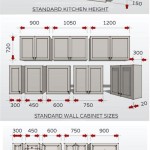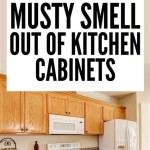Using Oil-Based Paint on Kitchen Cabinets: A Comprehensive Guide
Oil-based paints provide a durable and resilient finish for kitchen cabinets, especially in high-traffic areas prone to spills and wear. However, working with oil-based paints requires specific techniques and considerations for a successful outcome.
Benefits of Oil-Based Paint
- Durability: Oil-based paints create a hard, long-lasting coating that resists scratches, stains, and moisture.
- Glossy Finish: They offer a high-gloss finish that reflects light, making kitchens appear brighter and more spacious.
- Fade Resistance: Oil-based paints have exceptional UV resistance, preventing yellowing or fading over time. li>Heat Resistance: They are heat-resistant, making them suitable for use near stoves and ovens.
Choosing the Right Paint
When selecting oil-based paint for kitchen cabinets, consider the following factors:
- Finish: Choose a high-gloss finish for maximum durability and light reflection.
- Color: Select a color that complements your kitchen décor and personal preferences.
- Brand: Opt for reputable brands known for producing high-quality oil-based paints.
Surface Preparation
Thorough surface preparation is crucial for proper paint adhesion and a smooth finish. Follow these steps:
- Cleaning: Remove all dirt, grease, and grime with a cleaning solution.
- Sanding: Sand existing paint or clear finishes to create a smooth surface for better paint adhesion.
- Priming: Apply a layer of oil-based primer to seal the surface and promote paint adhesion.
Application Techniques
For best results, use the following application techniques:
- Brushing: Use a high-quality brush to apply thin, even coats.
- Rolling: For larger areas, use a roller with a smooth nap.
- Multiple Coats: Apply two to three coats of paint, allowing each coat to dry completely before applying the next.
- Thinning: If necessary, thin the paint slightly with paint thinner to improve flow and application.
Drying and Curing
Oil-based paints require longer drying and curing times than water-based paints. Allow the paint to dry for several hours between coats and allow it to cure for at least 24-48 hours before handling or using the cabinets.
Cleanup and Maintenance
Proper cleanup and maintenance ensure a long-lasting finish:
- Cleanup: Use paint thinner to clean brushes, rollers, and other tools.
- Regular Cleaning: Wipe down cabinets regularly with a damp cloth to remove dust and dirt.
- Repainting: If necessary, repaint cabinets every few years to maintain their appearance and durability.
Conclusion
Using oil-based paint on kitchen cabinets provides a durable, glossy, and fade-resistant finish that enhances both the aesthetics and functionality of your kitchen. By following the steps outlined in this guide, you can achieve a professional-looking finish that will last for years to come.

5 Places To Use Oil Based Paint

Kitchen Cabinets Best Paint For Oil Based Waterbased Cleaning Tsp Woodworker S Journal

Best Paint For Cabinets Oil Enamel Or Hybrid

How To Apply Oil Based Paint On Built In Cabinets Sunnysideupstairs

Help Satin Oil Based Looks Like Semi Gloss Hometalk

Avoid These Mistakes How To Paint Cabinets That Are Already Painted Grace In My Space

Tips For Painting Kitchen Cabinets Family Handyman

How To Paint Anything And Everything Addicted 2 Decorating

How To Paint Kitchen Cabinets In 7 Simple Steps

How To Paint Kitchen Cabinets Sarah Hearts
Related Posts








